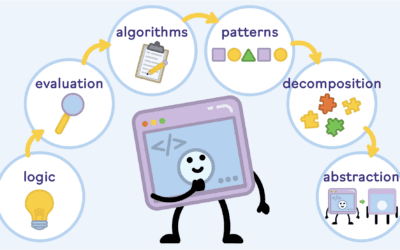Hands-on Projects, Coding Challenges & Flexible Strategies for Every Classroom Looking to bring more excitement and depth to your STEM instruction? Yeti Academy’s latest blog post highlights classroom-tested ways to keep your students engaged through hands-on activities, practical coding lessons, and tips for adapting content to fit your classroom’s needs—whether you’re working with a large group, small group, or teaching virtually.
1. Start with Small, Impactful Projects
Sometimes simple is powerful. Beginner-friendly projects—like those in our Google Workspace curriculums—are perfect for building student confidence and curiosity early on. These projects require minimal prep, making them easy to implement as bellringers, station activities, or extension tasks. Build confidence and curiosity by introducing bite-sized STEM challenges. For example:
Google Workspace Skills (Pet Spa/Snowboard Shop/Theme Park): Have students design a simple flyer or budget spreadsheet to practice foundational skills.
Block-Based Coding (Space Code Jr): Task younger learners with creating a short sequence to “launch a rocket.”
💡 Tip: Yeti’s plug-and-play courses (like Patterns or Yeti Keyboarding) are perfect for low-stakes warm-ups or independent practice.
2. Flexible for Different Class Sizes and Learning Formats
Whether you’re leading a whole group or supporting independent learners, many student-guided courses include built-in activities that can be done solo or collaboratively. If you’re teaching remotely or in a hybrid setting, our Plug & Play courses offer self-paced options that don’t require grading—making them ideal for asynchronous learning. Here are a few ideas:
Group Work: Assign collaborative roles in The Bike Shop (e.g., “designer” vs. “accountant”) or Sports Med’s experiments.
Independent Tasks: Use student-guided courses (Pizzeria, Mars Expedition) for self-paced learning.
Virtual/Hybrid: Plug-and-play courses (Super Citizenship, Yeti Keyboarding) require no teacher grading and work well remotely.
3. Adapting Lessons by Grade or Ability
Yeti courses are designed to be flexible. Teachers can manually adapt pacing or project depth to support learners who need more guidance or to challenge advanced students. Need ideas? Our support team is happy to help you brainstorm ways to differentiate!
4. Incorporate Coding Challenges for Real-World Relevance
Students love problem-solving when they see how it applies to real life. Our Yeti Code modules offer just that as they turn abstract concepts into tangible problem-solving. Level 1 introduces key programming concepts through fun Javascript-based activities, while Level 2 builds on this foundation with more advanced logic, loops, and conditionals. These challenges are perfect for helping students connect classroom learning with future-ready skills.
💡 Tip for Advanced Learners: Extend projects by asking students to document their code or present solutions to the class.
5. Encourage Collaboration with Built-in Challenges
Courses like Sports Med and Theme Park include group-based experiments and design projects that naturally promote teamwork, critical thinking, and communication. Many courses include activities that can be assigned as collaborative challenges to foster classroom engagement.
Design Challenges: Have teams compete to build the best Snowboard Shop logo using Google Drawings.
Peer Feedback: After Sports PR Agency lessons, host a “press conference” where students role-play as athletes and PR reps.
Heads Up: Structured group work is built into Sports Med and parts of The Bike Shop. Leverage these if collaboration is a priority!
Yeti Academy is here to help you make STEM meaningful, manageable, and fun for your students. Request more information or schedule a walk-through to discover how Yeti Academy’s innovative software can empower educators and engage students.
Get More Info 📅 Schedule a Walk-thru








